
All categories
Featured selections
Trade Assurance
Buyer Central
Help Center
Get the app
Become a supplier

(21384 products available)
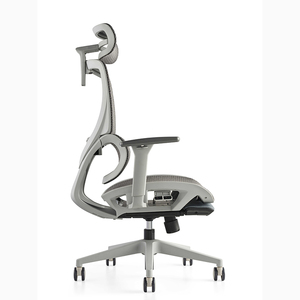
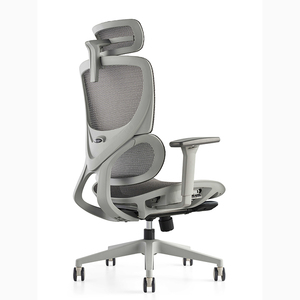
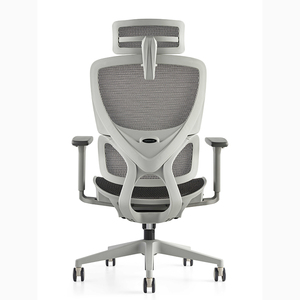
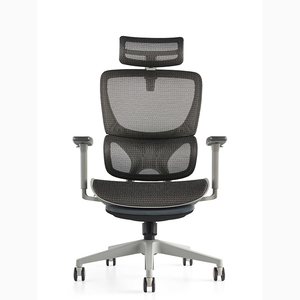
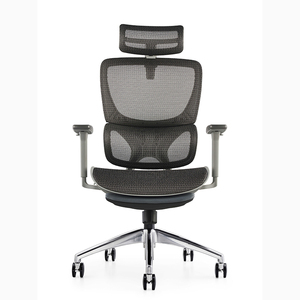







































There is a wide variety of ergonomic keyboards to help with various conditions. Some designs are more traditional, with a slight change in the angle and design of the keyboard. Other designs are more unconventional, with the keyboard split into two halves, one for each hand. The keyboard in this type is typically tented or raised slightly in the middle to help with the natural curve of the wrist and reach of the fingers. These keyboards may also have padding or cushioning on the wrist rest for more comfort. Some keyboards have a negative tilt, which angles the keyboard downward, keeping the wrists in a more natural position.
Ergonomic keyboards have a split design. The two halves of the keyboard can be angled to suit the user's wrist angle. Typing on a split keyboard is more comfortable because it allows the user to keep their hands and wrists in a natural position while typing. This reduces strain on the joints and muscles in the hand and wrist. The split design also means the user can type with their arms and shoulders in a more relaxed position.
Some ergonomic keyboards have a tented design. This means the middle of the keyboard is higher than the sides. The higher part can be adjusted to different heights. Tenting the keyboard keeps the wrists in a more neutral position. It reduces the need to flex the wrists inward to type. This helps to prevent carpal tunnel syndrome. Tenting also helps the user type with better posture. They can sit up straight and keep their shoulders back while typing.
Ergonomic keyboards have a wrist rest along the bottom edge. The keyboard will have a cushioned wrist rest. This is more comfortable than the hard edge of a regular keyboard. The wrist rest is made to support the wrists while typing. It is also meant to keep the wrists and forearms in a straight line. This reduces the strain on the tendons in the wrist and the muscles in the forearms.
Ergonomic keyboards have legs that can be adjusted to different heights. Some keyboards have legs that are also removable. A raised keyboard can give the user a more comfortable typing angle. Some people prefer a negative tilt because it keeps the wrists neutral. This is where the keyboard is lower in the front than in the back. It tilts away from the user instead of toward the user. But other people prefer a positive tilt. This is where the keyboard is higher in the front. The keyboard is tilted toward the user. A positive tilt can make it easier to reach the keys on top. Some people find this more comfortable than a straight, flat keyboard. It can help reduce shoulder strain, too.
Because of its benefits and features, the ergonomic keyboard has various use cases. Here are some of them:
This is the primary use of the ergonomic split keyboard. People who work in an office for long hours can greatly benefit from using an ergonomic keyboard. It can significantly reduce the strain on the hands, wrists, and forearms. This allows office workers to type comfortably without experiencing any pain or injuries. As a result, it can increase productivity and work efficiency in the workplace.
Gamers spend hours playing their favorite games. They can prevent hand strain and improve their gaming performance by investing in a customized ergonomic keyboard. They come with extra keys that allow gamers to perform various functions with ease. Some gaming keyboards also have backlighting that can enhance the gaming experience. Also, because they are made from durable materials, gamers can use them for many years.
Many people have started working from home because of the pandemic. They can reduce the risk of repetitive strain injuries by using an ergonomic keyboard. People who spend long hours using their computers at home can benefit from its comfort. Parents who work from home can use keyboards that are resistant to liquid spills and dust. This is because kids may accidentally spill liquid on the keyboards or drop them. Dust-resistant keyboards can increase their lifespan.
Typing code can be a tedious task, especially if one is using a flat keyboard. A split ergonomic keyboard can make it easier for programmers to type code quickly and accurately. It can reduce unnecessary hand movements and can increase typing speed. Additionally, some ergonomic keyboards have customizable keys. Programmers can assign commonly used programming keys to the keyboard. This can save time and improve their workflow.
People who use laptops when working can benefit greatly from using a portable ergonomic keyboard. They can connect it to their laptops to type comfortably. This can prevent hand strain. Also, because it is portable, people can take it anywhere and use it when working with laptops.
Sellers need to consider the following factors when choosing ergonomic keyboards to suit different needs.
It's important for buyers to consider who the keyboard is being purchased for. An ergonomic keyboard for the elderly will differ greatly from one for a teenager. They will have different needs and uses, with the elderly likely requiring extra-large keys with clear font, while the teenager may want a backlit keyboard for gaming. This should be kept in mind when choosing layouts, sizes, and additional features.
Some keyboards are wired, while others use a wireless connection to connect to a computer. Wireless keyboards are a popular choice because they are not limited by the cable length. The keyboard can be placed anywhere on the desk, which is convenient for use. Also, a wireless keyboard can reduce cable clutter on the desktop, making the desktop more tidy. However, wired keyboards are preferred in some aspects, such as no delay, no battery replacement, and more affordable.
Some keyboards can be adjusted to suit the user's needs. They allow the user to change the height and angle. These keyboards can be a good option because they can be customized to suit the user's preference. They can also help the user to keep a good posture while typing, which can prevent pains and aches.
Some keyboards have extra features, like a built-in touchpad or numeric keypad. Be sure to select a keyboard with features that will improve overall computer use. For example, a touchpad can be a good option if the user doesn't want to use a mouse. A numeric keypad can be helpful for people who need to do data entry.
When purchasing an ergonomic keyboard, it is important to consider the comfort it provides. Look for features that can help reduce strain while typing. These features may include a cushioned wrist rest, split design, and keys that are angled or contoured. The goal is to find a keyboard that makes typing more comfortable and can help prevent repetitive strain injuries.
When choosing an ergonomic keyboard, it is important to consider the layout. Some models have a split design, where the keys are separated into two sections. This can help keep the user's hands in a more natural position while typing. Other models have a curved design, where the entire keyboard is curved. This can also help the user keep their hands in a more natural position. Some models have a tented design, where the middle of the keyboard is raised. This can help keep the user's wrists straight. A compact design is smaller than a traditional keyboard. This can help keep the mouse closer to the user's hands, which can reduce strain.
Q1: Are ergonomic keyboards better?
A1: Whether an ergonomic keyboard is better or not depends on the user's needs and situation. For people who spend many hours daily typing on a keyboard, an ergonomic keyboard is a better choice. It helps to improve typing comfort and reduce the risk of repetitive strain injuries (RSIs).
Q2: Why are ergonomic keyboards split?
A2: Split keyboards are designed to separate the left and right halves of the keyboard to match the natural angle of the user's wrist when typing. This helps to keep the wrists in a more neutral position and reduce strain on the joints.
Q3: Do ergonomic keyboards really help?
A3: Yes, ergonomic keyboards are very helpful. They can help to improve overall comfort during typing sessions and reduce the risk of developing conditions like carpal tunnel syndrome and tendonitis.
Q4: What is the best ergonomic keyboard?
A4: There is no one-size-fits-all answer to this question. The best ergonomic keyboard is one that suits the user's needs, preferences, and budget. Some popular options include the Microsoft Sculpt Ergonomic Keyboard, Kinesis Advantage2 Ergonomic Keyboard, and Logitech Ergo K860.
Q5: Is an ergonomic keyboard worth it?
A5: Yes, an ergonomic keyboard is worth the investment, especially if the user spends several hours typing on a regular, daily basis. The improved comfort and reduced risk of injury are important benefits of ergonomic keyboards.